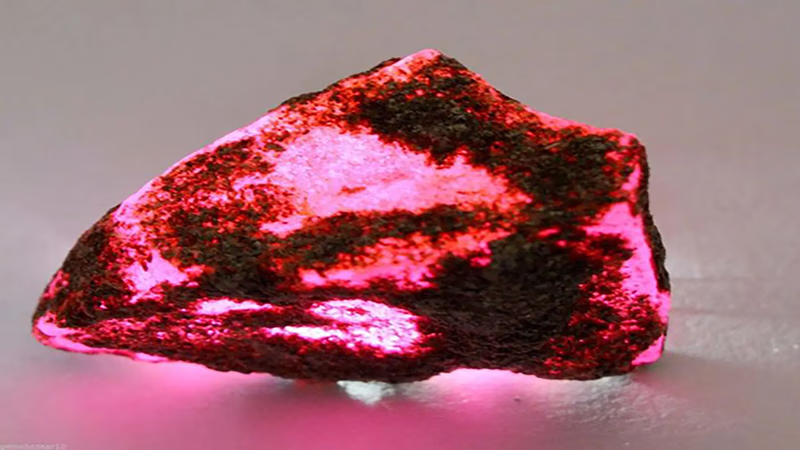
Rubies: precious gemstones with rich history and vibrant color.
Rubies have been treasured since ancient times. The earliest records of rubies date back to around 2000 BC in regions such as India, where they were highly regarded and considered one of the most precious gemstones. In Sanskrit, ruby is known as "ratnaraj," meaning the "king of gemstones." Ancient Indian scriptures, known as the Vedas, mention rubies as symbols of power, protection, and passion. They were associated with the sun and believed to provide good fortune and ward off evil. During the Middle Ages, rubies gained popularity in Europe. Royalty and nobility adorned themselves with rubies as symbols of wealth and status. Rubies were often set in crowns, regal jewelry, and religious artifacts. They were believed to confer protection, courage, and divine blessings.
One famous historical ruby is the Black Prince's Ruby, which is set in the British Imperial State Crown. It was believed to have been worn by Henry V and Richard III in battle and is now part of the Crown Jewels of the United Kingdom. In the 13th century, Burma (now Myanmar) emerged as a significant source of high-quality rubies. Burmese rubies, renowned for their exceptional color, often had a deep red hue known as "pigeon's blood." These rubies were highly sought after and considered the finest in the world.
Burmese rubies gained prominence and were treasured by royalty and the elite. The Mogok Valley in Burma became synonymous with the finest rubies and continues to be a renowned source of these gemstones. With advancements in gemstone mining and trading, rubies from various regions gained recognition. Thailand, Sri Lanka, Tanzania, Mozambique, and Madagascar are notable sources of rubies today. In the 19th and 20th centuries, ruby mining expanded, and gem-quality rubies became more accessible to a wider market. The discovery of new deposits, along with improved cutting and polishing techniques, made rubies more readily available.
Throughout history, rubies have been associated with powerful symbolism and beliefs. They have been considered the gemstone of love, passion, courage, and vitality. Rubies were believed to bring good fortune, protect against misfortune, and ward off evil spirits. In modern times, rubies continue to be highly valued and cherished gemstones. They are often used in engagement rings, fine jewelry, and statement pieces. The allure of rubies lies in their vibrant color, rarity, and rich historical significance.
The original origin of the “Ruby” is from ancient Greece i.e. huakinthos and has been translated from Arabic as” ruby” and from Middle Persian as”yakand” in Persian. Red ruby stone is one used in the jewelry industry. The Greeks believed that this jewel gives the owner particular advantages such as health, knowledge, wealth, and winning in the love. Also, they have believed, if a person holds with a pin this gem on the dress, it may give their life peace and intimacy, and if the soldiers hold this stone, the defeat can be evitable.
Due to the importance of ruby and its beautiful color and appearance, it is very popular and attracts attention. The pure type of this stone is very bright, its color is like the blood of a red dove, and it can also be seen in other colors such as wine and purple. According to the Arabs, this gem also has yellow, blue, green, and white tones, but its main color, pomegranate color. The color red symbolizes love, patriotism, and anger and the colors of favorite children's warriors.
-
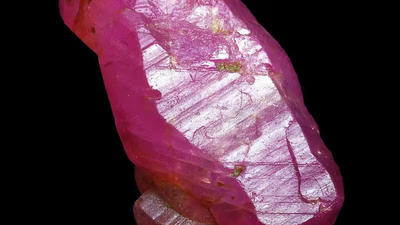
Identifying a genuine ruby gemstone involves several key characteristics. Authentic rubies display a vibrant, deep red color that is evenly distributed, without any noticeable variations. Flaws or inclusions are common in natural rubies, while flawless stones may be synthetic. The refractive index is another important factor; rubies have a high refractive index that can be measured with a refractometer. Additionally, rubies score 9 on the Mohs hardness scale, making them resistant to scratches from most materials. To differentiate real rubies from counterfeits, one can compare the stone"s color and shine with red glass or test its hardness by attempting to scratch it with other materials. Genuine rubies also exhibit excellent heat conductivity and may fluoresce under UV light. Certification from reputable gemological laboratories can further confirm authenticity and quality. "
-
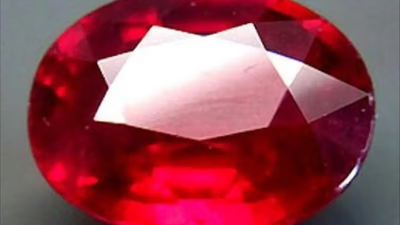
Ruby is a gemstone associated with vitality, passion, and energy. It is believed to enhance physical and emotional strength, promoting motivation and courage. Traditionally linked to love and romance, ruby is thought to deepen emotional connections and attract devotion. Additionally, it possesses protective qualities, shielding against negative energies and providing a sense of security. Ruby is also seen as a symbol of good fortune, believed to bring luck and prosperity in various life aspects, including business endeavors. Its healing properties are noted for improving blood health and boosting the immune system. The stone is said to increase energy levels, promote circulation, and support overall well-being. Historically revered in myths and cultures, ruby has been used as a talisman for power and protection.
However, its potent energy can lead to negative emotions if misused. Ruby"s benefits extend to women’s health issues such as infertility and menstrual pain relief. It is also recommended for treating fever by placing it on the third eye chakra or palm. Overall, ruby embodies strength, courage, joy, and self-confidence. "
-

Rubies have been revered since ancient times, with origins tracing back to around 2000 BC in India, where they were known as "ratnaraj" or "king of gemstones. " Ancient texts associated rubies with power, protection, and good fortune. In Europe during the Middle Ages, rubies became symbols of wealth and status among royalty, often featured in crowns and religious artifacts. The Black Prince"s Ruby is a notable historical example, linked to English royalty. By the 13th century, Burma emerged as a key source of high-quality rubies, particularly the prized "pigeon"s blood" variety. Other regions like Thailand and Sri Lanka also gained recognition for their rubies over time. The 19th and 20th centuries saw advancements in mining and trading that made rubies more accessible to the general public. Today, rubies are celebrated for their vibrant color and historical significance, frequently used in fine jewelry and engagement rings. Their symbolism encompasses love, passion, courage, and vitality.
-
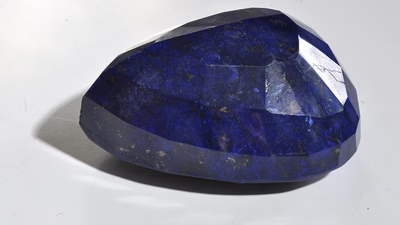
The value of Asian rubies is primarily influenced by color, clarity, size, and cut. The most sought-after rubies exhibit a vivid red hue with a hint of blue, known as "pigeon"s blood" red. Clarity is also crucial; rubies with fewer inclusions are more valuable. Size plays a significant role, as larger rubies are rarer and command higher prices per carat. The cut affects the gem"s brilliance and overall appearance, with well-cut stones being more desirable. Market demand can drive prices up based on origin and specific qualities. Notably, Burmese rubies are historically the most valued due to their exceptional characteristics. Other notable sources include Vietnam, Sri Lanka, and Thailand, each producing distinct color variations.
While heat treatment is common to enhance ruby quality, untreated stones with natural brilliance are considered more valuable. Understanding these factors is essential for buyers and sellers in the Asian ruby market.
-
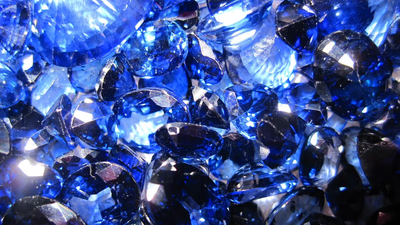
Ruby is renowned for its intense red color, ranging from deep red to purplish or orangish-red, with the most prized hue being "pigeon"s blood" red. Scoring a 9 on the Mohs scale, rubies are among the hardest gemstones, making them durable and suitable for jewelry. Their brilliance and luster are enhanced by proper cutting and polishing, with transparent rubies being the most valuable. Larger rubies are rare and command higher prices. Inclusions within rubies can affect clarity and value; however, some inclusions may be acceptable based on their characteristics. Rubies symbolize love, loyalty, and wealth, often associated with royalty throughout history. The gemstone"s color is attributed to chromium impurities in its structure. Notable sources of high-quality rubies include Burma (Myanmar), Thailand, Sri Lanka, Tanzania, Mozambique, and Madagascar. Rubies have cultural significance across various societies and are believed to bring good fortune.
-
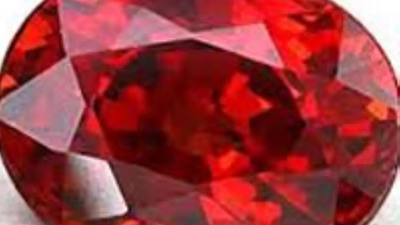
The article highlights some of the largest and most famous ruby gemstones in the world, detailing their weights, origins, and unique characteristics. The Rajaratna Ruby, weighing approximately 2,475 carats, is noted as one of the largest rubies and is housed in Jaipur"s Albert Museum. The Rosser Reeves Star Ruby, known for its six-ray star effect, weighs 138. 7 carats and is displayed at the Smithsonian Institution. Other notable rubies include the Delong Star Ruby from Burma at 100. 32 carats, the Sunrise Ruby recognized for its color and clarity at 25. 59 carats, and the Chhatrapati Manik from India at 20. 6 carats.
The Graff Ruby is also mentioned for its high value after being sold at auction. Additionally, the Liberty Bell Ruby stands out due to its unique shape and weight of 8,500 carats. The Neelanjali Ruby is highlighted for its deep red color and royal significance in India. Lastly, the Pride of Burma garners attention for setting a record price per carat at auction. "






